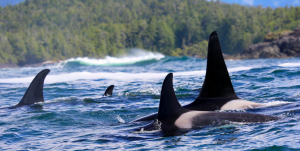
Killer whales (Orcinus orca) are among the most majestic marine mammals, but are also among the most threatened species living off the Canadian coastline. At first glimpse, the whales can be distinguished by their unique black and white colouration and iconic 1-2m dorsal fin. Although these characteristics may not seem unique to each killer whale, to a trained individual the white patches, dorsal fin size, and dorsal fin structure can be used to identify individuals from any known pod! To understand how killer whales are distributed in these waters, we must first explain the concept of ‘ecotypes’. Ecotypes are distinct forms of animal species who occupy a particular habitat. Three separate ecotypes of killer whale populations reside off of British Columbia – residents, (Bigg’s) transients, and offshores. Unlike the transients who feed on other marine mammals, residents eat fish and only fish. The residents have a strong preference for the biggest and oiliest of salmon species, notably Chinook and king salmon. Within the resident population are two distinct populations of residents. On the northern end of Vancouver Island, there exists the northern population and on the southern end of Vancouver Island, there exists the southern population. The residents are highly social and live in distinct family groups called matrilines, or more commonly known as pods. The pods consist of the females, all of her offspring, and the offspring of her daughters. The northern resident pods (A, G, and R) live in groups throughout their lifetime. In this way, behaviour, culture, and communication is transmitted through generations. Some local citizens from northern Vancouver Island even claim that they can identify the specific pod of the northern resident population just by listening to their call types!
Status of the Northern Residents
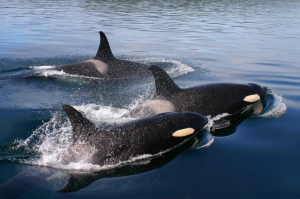
Since their decline in 1964 caused by the live-capture aquarium fishery, the northern residents have displayed slow, but positive trends in population growth. See the graph below to see how their population size has increased from approximately 125 individuals to approximately 300 individuals in 2015. All you need to take away from the graph is that the northern resident populations are on a slow, but steady incline. Unfortunately, the northern residents continue to face many threats to their populations. They are still struggling because their low population size, low birth rate, and sensitivity to human threats contributes to their low survival. Some of the human threats that have a tremendous impact on the whales include inadequate food supply, disturbance by boats, as well as pollutants (ie. PCB’s, which is a flame retardant). Killer whales are especially vulnerable to pollutants because the toxin accumulates in fatty reserves and make the whale highly susceptible to diseases. As of March 2019, both the Committee of Endangered Species in Canada (COSEWIC) and the Species At Risk Act (SARA) have continued to list the status of the northern residents as threatened.
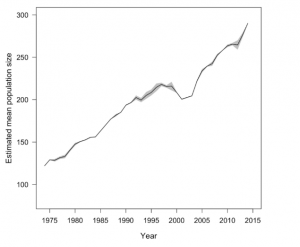
Additionally, with increasing global human populations, much of their habitat range exists within areas of high vessel traffic. In order to maintain population survival, these whales must cope with whale watchers, fishing vessels, kayaks, cruise ships and more! In 1982, a solution came about to try and help manage this level of vessel disruption: the Robson Bight (Michael Bigg) Ecological Reserve.

Itchy Whales at Robson Bight
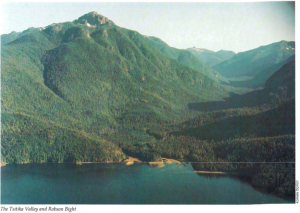
The Robson Bight (Michael Bigg) Ecological Reserve is located in Johnstone Strait, near the beautiful community of Telegraph Cove (just south of Port McNeil), as shown in the map above. The reserve was named after the late Dr. Michael Bigg who was considered the father of killer whale research in the Johnstone Strait. His work in killer whale identification and monitoring has become the foundation for modern killer whale research off the BC coast. As such, the bight was dedicated in his name. The reserve consists of over 1700 hectares of forest, estuary, beach and marine habitats. It is place where the whales escape some of the noise and everyday hustle and bustle of the Johnstone Strait. The bight is one of the only remaining limited-access critical habitats for the whales on Vancouver Island!
Have you ever heard of itchy killer whales? Of special concern in the bight are the world-renown “rubbing beaches”. Whales regularly gather between July and October to rub their bodies on the smooth pebbles of the underwater beaches, a behaviour which is not fully understood by researchers. Although there are two ecotypes of killer whales that utilize the Strait, the residents and transients, only the residents are considered to benefit directly. The transients do not appear to “itch” themselves on the beach. Although other species may not rub themselves on the beaches, the spill-over effect of an ecological reserve does protect an area for other flora and fauna. The live underwater camera below provided by EXPLORE.org shows off this unusual itching behaviour exhibited by the northern residents. In this video, you can also see all of the other critters who utilize these beaches. Look out for the sea otters, harbour seals, and schools of fish. Also, make sure to turn your sound up to hear the distinct call types of the northern resident pods! You can imagine that boat traffic and killer whales chats don’t mix very well. This reinforces the idea that an ocean quiet enough for using echolocation clicks and vocalizations is essential for navigation, hunting, cultural and social purposes.
Because the reserve encompasses a terrestrial and aquatic component, access for recreational vessels, kayaks, whale watchers, cruise ships, and land-users is prohibited. In order to ensure compliance with these groups, the Cetus Conservation Society, a non-profit environmental non-governmental group (ENGO), has a warden program which ensures that all boats entering into the vessels are directed away. The warden program is also responsible for ensuring proper signage and clear restriction areas for land-users. Not only do the wardens play a tremendous role in mitigating disturbance, they also provide on-water education about the benefits of the reserve through explanations on the biology and social nature of the northern residents.

Not all smooth sailing!
Despite the sanctuary provided by BC Parks, there still remains vessel disturbance. While most vessels are not allowed in, commercial fishing vessels have “grandfathered” access and have the right to fish within the sanctuary. At certain peak fishing times, there can be upwards of ten vessels in the reserve. Sometimes they are within the reserve for 24 hours per day! When the bight was established 37 years ago, allowing fisher access to the reserve was inevitable because of their fishing rights. However, this has caused a large strain on the values of the reserve in its attempt to create a sanctuary for this threatened species. Prior to the reserve’s establishment, logging in the upper Tsitika Valley also posed concern for the hydrology, sedimentation, eutrophication, and habitat degradation for the Tsitika river. Even after the reserve was established, the history of logging outside of the reserve remained prevalent. Two main cut sites in 1987 and 1919 were a subject of concern for the land habitats as well as the downstream killer whale habitats. The photo below shows the effect of logging in the Tsitika river watershed.
In future, the hopes would be that the reserve becomes larger in size and also is able to reduce all boat traffic in the reserve and all logging that poses threats to the reserve. In this way, the reserve can truly be a sanctuary for not only the northern residents, but also for other red-listed species including coho salmon (Oncorhyncus kisutch), Dolly Varden char (Salvelinus malma), and herring (Clupea sp.).
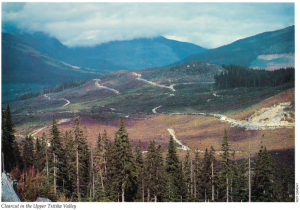
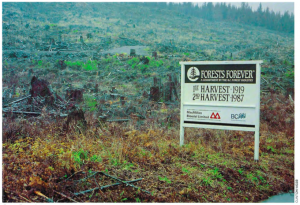
An Intrinsically Valuable Conservation Initiative
Even though the Robson Bight Ecological Reserve is not a perfect reserve and despite that there is little empirical proof that it has helped the whale populations grow and protect the surrounding habitat, it is meaningful in its attempt to do right by the whales. Jared Towers, who is a local resident, DFO scientist, and an expert on the northern residents, wanted it to be absolutely clear: the reserve holds tremendous intrinsic value for the whales. Not only that, he points out that it also hold tremendous intrinsic value for the surrounding communities because it instills a sense of stewardship over the whales and their habitat. This is a hugely important benefit of the reserve and it is one that should be celebrated.
What can we do?
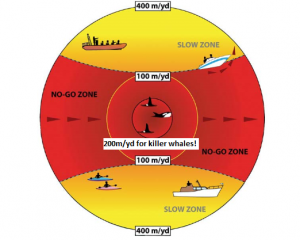
For the last 37 years, the Robson Bight Ecological Reserve has led a strong conservation initiative to protect the northern residents. Now it is our turn. For those of us who reside on the BC coast, our recreational, economic, and cultural relationship with the ocean is extensive. Unfortunately, this means that we are sharing the oceans with our fragile friends and are often using the same waters at the same time. Boat noise is one of the major threats to killer whale habitats because the acoustic call types between families are easily muffled with the noise of propellors in the water. From a whale watching perspective, following the “Whale Wise Guidelines” can be tremendously valuable to the whales. You can follow the watching guidelines in the video below, but the take home message is to act in a respectful manor so as to not degrade the physical and biological quality of the whale habitats.
This project was conducted by Holly Fellowes (@holly_fel ) and Eugenie Jacobsen (@EugenieJacobsen).